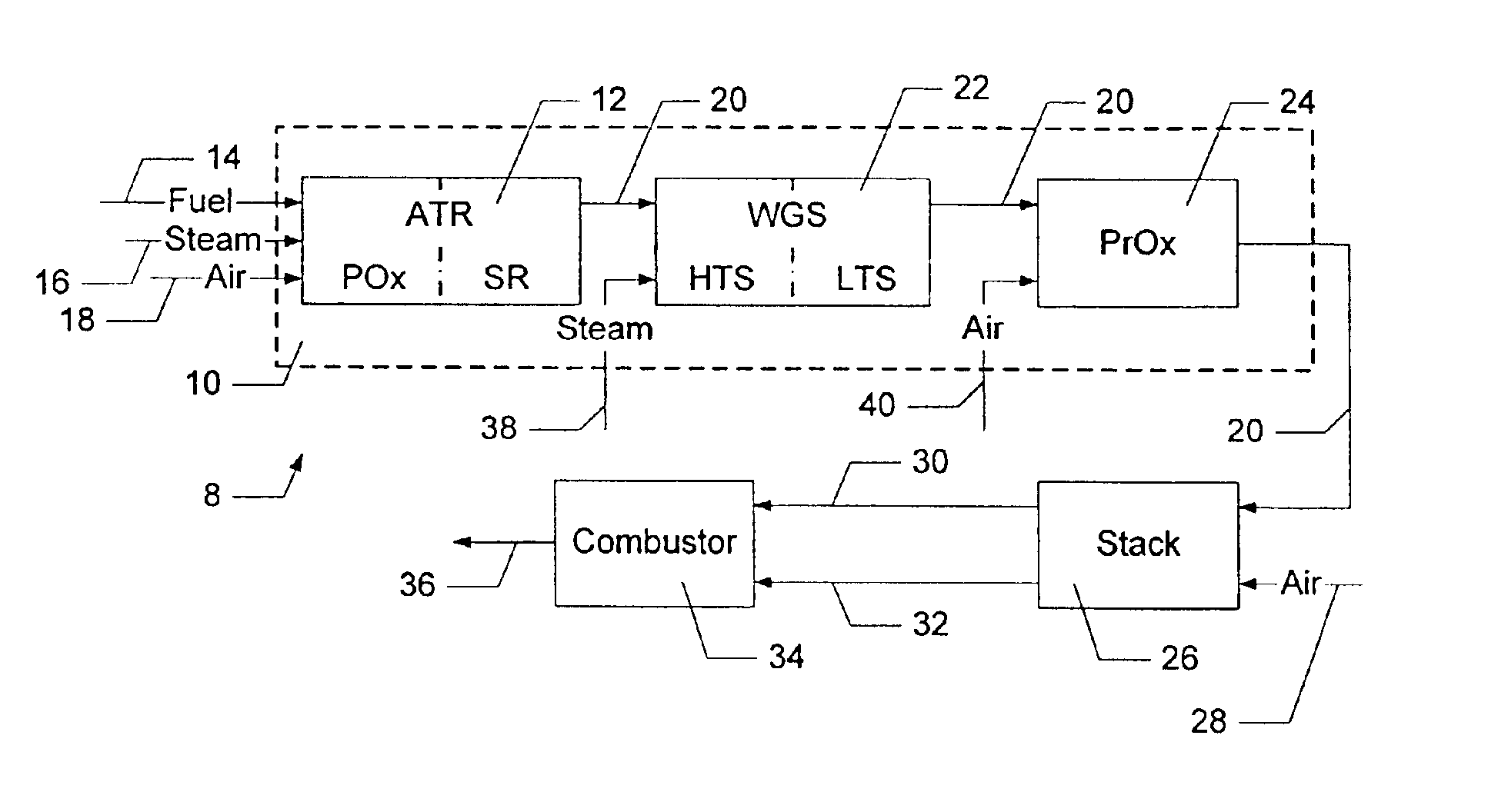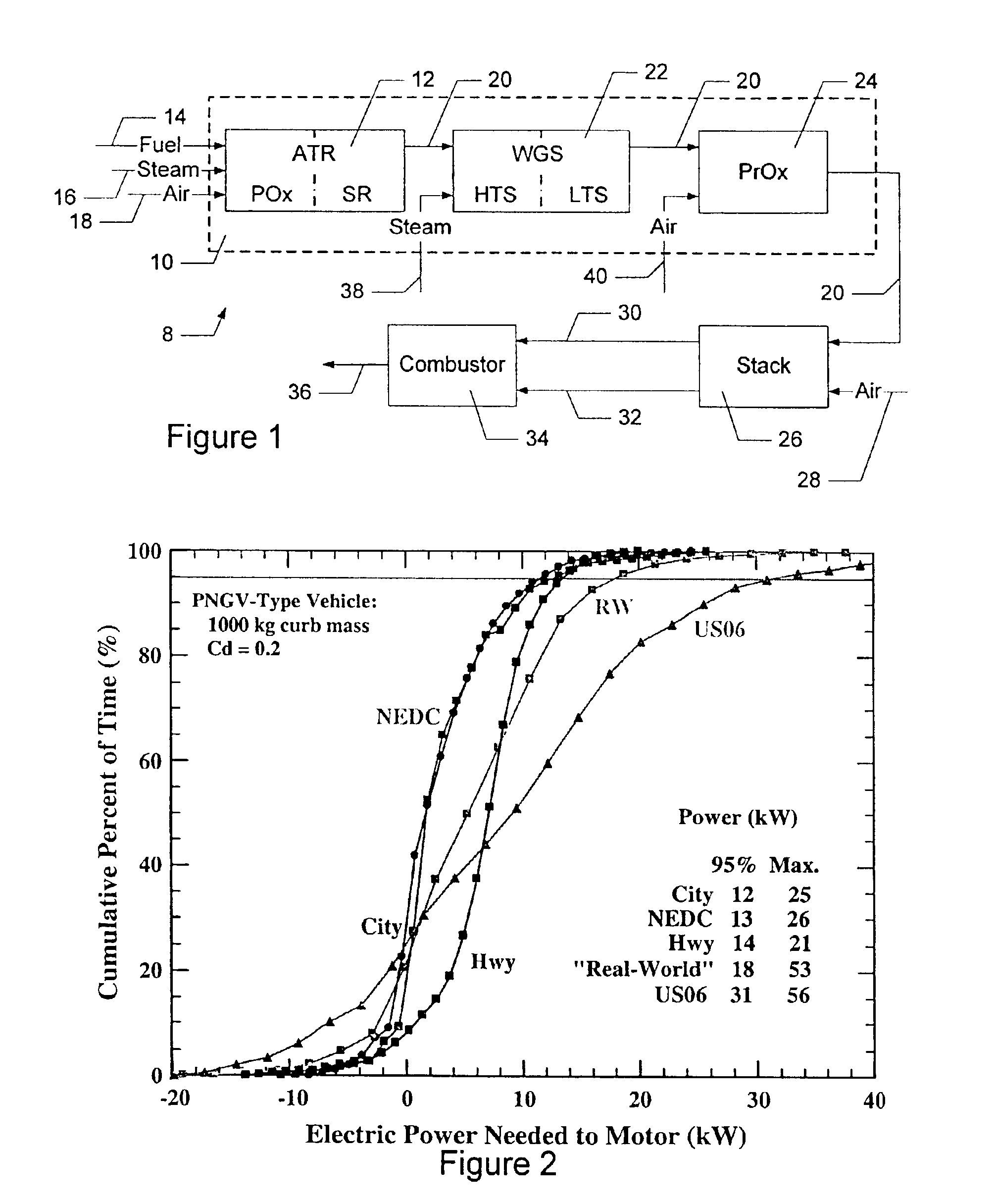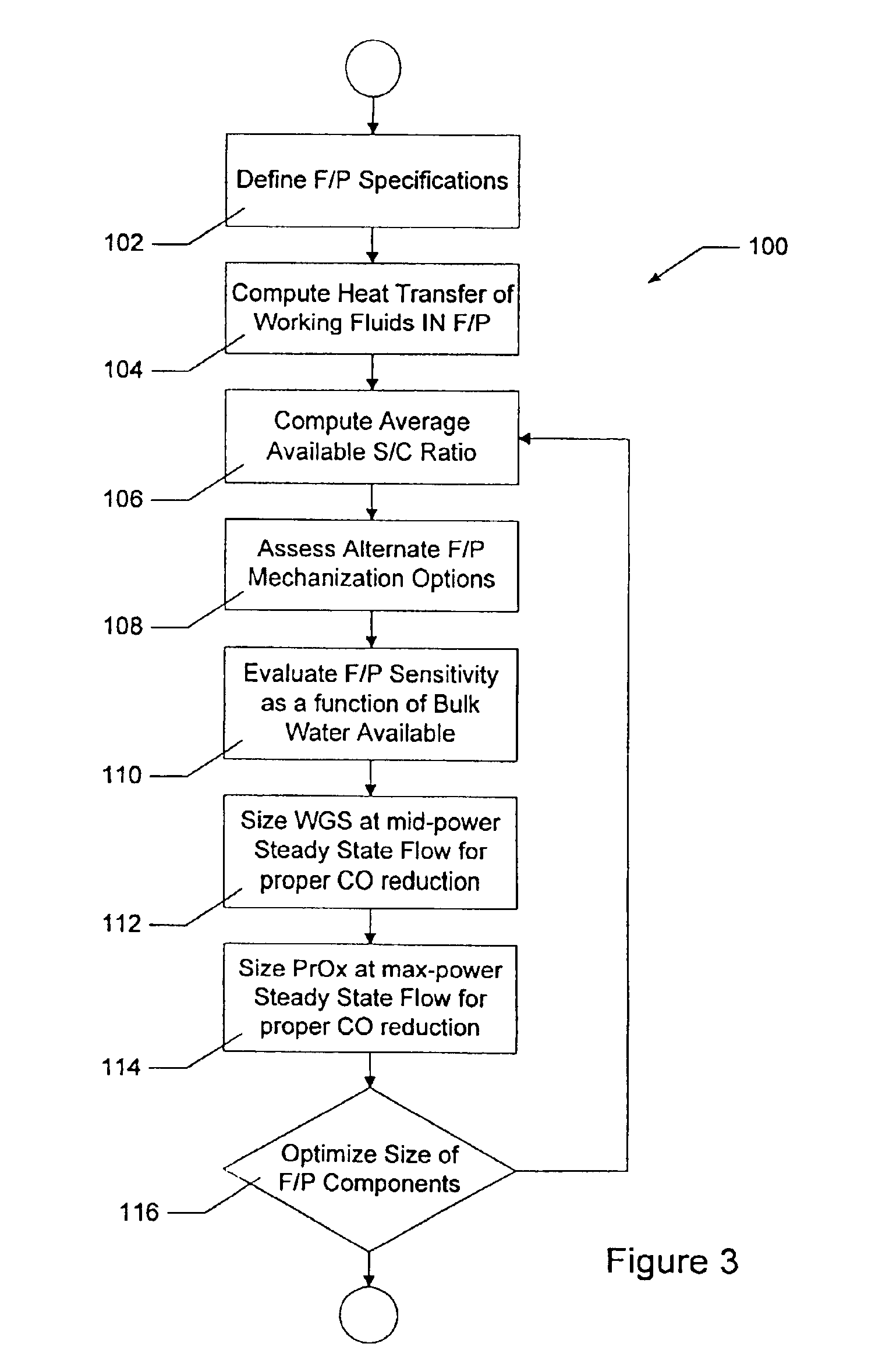Methods for reducing mass and volume of a fuel processor
a fuel processor and mass reduction technology, applied in the direction of battery/fuel cell control arrangement, separation process, combustible gas purification/modification, etc., can solve the problem of power level albeit at a less than optimal efficiency, and achieve optimal efficiency, maximize water availability, and maximize system operation efficiency
- Summary
- Abstract
- Description
- Claims
- Application Information
AI Technical Summary
Benefits of technology
Problems solved by technology
Method used
Image
Examples
Embodiment Construction
[0015]The following description of the preferred embodiment is merely exemplary in nature and is in no way intended to limit the invention, its application, or uses.
[0016]A fuel processor for converting hydrocarbons such as gasoline into a hydrogen-containing reformate stream for use by a fuel cell system is shown in FIG. 1. The present invention in one preferred embodiment is a method for optimizing the size (i.e., mass and volume) of a fuel processor for use in a fuel cell system. Accordingly, a fuel cell system 10 is shown in FIG. 1 for the purpose of teaching generally the various components of an exemplary fuel cell system. Although the embodiment of the present invention is described herein with reference to components of the fuel processor shown in FIG. 1, it should be understood that the invention is not limited by the components and / or arrangements of components shown in FIG. 1. Embodiments of the present invention can be used to design fuel processors having components and...
PUM
| Property | Measurement | Unit |
|---|---|---|
| volume | aaaaa | aaaaa |
| size | aaaaa | aaaaa |
| power | aaaaa | aaaaa |
Abstract
Description
Claims
Application Information
 Login to View More
Login to View More - R&D
- Intellectual Property
- Life Sciences
- Materials
- Tech Scout
- Unparalleled Data Quality
- Higher Quality Content
- 60% Fewer Hallucinations
Browse by: Latest US Patents, China's latest patents, Technical Efficacy Thesaurus, Application Domain, Technology Topic, Popular Technical Reports.
© 2025 PatSnap. All rights reserved.Legal|Privacy policy|Modern Slavery Act Transparency Statement|Sitemap|About US| Contact US: help@patsnap.com



